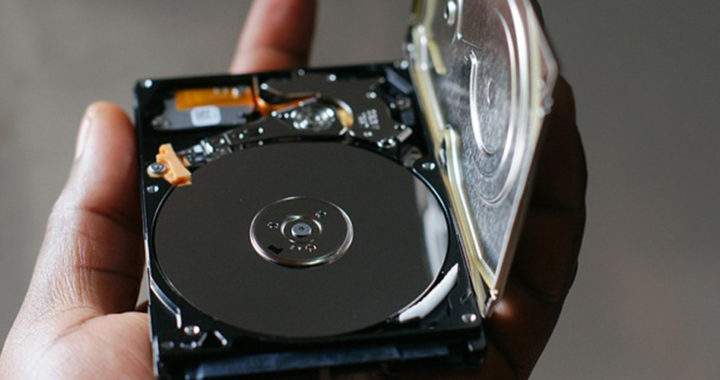Both SATA or Serial Advanced Technology Attachment and SAS or Serial-Attached SCSI are standards for connecting peripherals or devices and transferring data between them using serial signaling technology. This means that data are transferred one bit at a time and on a sequential manner.
Note that serial signaling technology is in contrast with parallel communication in which data bits are transferred at the same time. Although both technologies can theoretical transfer a data bit at the same right, serial signaling technology can go to much higher frequency, thus resulting in a higher net transfer rate.
A SATA hard drive and a SAS hard drive are generally similar because both use serial signaling technology and they both are type of mechanical data storage device that use magnetic storage and rotating disks.
However, the central difference between SATA hard drive and SAS hard drive rests on the specific implementations of serial communication and overall hardware and technical configurations. This means that a SATA hard drive operates in a different manner than a SAS hard drive.
This article provides a quick SATA hard drive vs. SAS hard drive head-to-head comparison by listing down and describing the specific differences between the two.
Differences Between SATA Hard Drive and SAS Hard Drive
From Compatibility Issues to Capabilities
1. Backward Compatibility
A key difference between SATA hard drive and SAS hard drive is compatibility. SATA hard drives, especially SATA version 2 and above, can actually be connected and thus, work on a SAS backplane or controller. On the other hand, connecting a SAS HDD to a SATA backplane is impossible.
2. Storage Capacity Availability
One of the advantages of SATA HDDs is a wider options for storage capacity. 1TB SATA hard drives are very common and 3TB and 8TB variants are relatively affordable. On the other hand, although it is also easy to purchase SAS HDDs with 3TB to 8TB storage capacity, the most popular configuration is 500GB
3. Cost Compared to Capacity
Another primary advantage of SATA hard drives over SAS hard drives is cost. For example, a 500GB 5400 RPM SATA hard drive retails at around USD 30.00 USD to 50.00 while a 500GB 720 RPM SAS hard drive retails around USD 70.00 to USD 100.00. Moreover, SATA HDDs are more cost effective at around 1TB to 3TB range.
4. Data Transfer Speed
The notable advantage of SAS hard drives over SATA hard drives is data transfer speed. The first SATA version can only transmit 1.5 GBit/s and the fourth version can transmit 16 Gbit/s. ON the other hand, the first version of SAS or SAS-1 has a speed of 3 Gbit/s while SAS-3 has 12 Gbit/s of speed and SAS-4 has 24 Gbit/s of speed.
Further Look Into Technicalities and Mechanisms
5. Full-Duplex vs. Half-Duplex
A duplex communication system is basically a point-to-point connection system that describes the direction of communication between two devices at a given time. Another advantage of SAS hard drive is that it is a full-duplex system while a SATA hard drive is a half-duplex system. This means that SAS HDDs can both send and receive data at the full speed at the same time while SATA HDDs can only transfer data at full speed in one direction at a time.
6. Signaling Voltage
Another difference between a SATA hard drive and a SAS hard drive is power consumption. The latter consumes more power. SAS has a higher signaling voltage of 800 to 1600 mV for transmitting and 275 to 1600 mV for receiving. This higher signaling voltage allows SAS to support server backplanes. Meanwhile, SATA uses a signaling voltage of 400 to 600 mV for transmitting and 325 to 66 mV for receiving.
7. Data Cable Limitations
Remember that SAS uses a higher signaling voltage compared to SATA. This means that another advantage of SAS hard drives is that they can use longer cables of up to 10 meters or 33 feet in length. On the other hand, SATA hard drives have a cable limit of 1 meter or 3 feet while eSATA has a cable limit limit of 2 meter or 6.6 feet.
8. Reliability and Durability
Both SATA hard drives and SAS hard drives are considerably reliable and durable under normal use. However, SAS hard drives are engineered for round-the-clock wide scale use. SATA hard drives can technically operate under a 24/7 condition but it is more prone to failures. Note that the mean time between failures or MTBF for SATA hard drives is 700K hours to 1.2 million hours of use at 25 degrees Celsius. SAS hard drives have an MTBF of 1.2 million to 1.6 million of hours of use at 45 degrees Celsius.
Summary: SATA Hard Drive vs. SAS Hard Drive
The aforementioned differences between a SATA hard drive and a SAS hard drive all boil down to utility and practicality. Remember that the similarities between the two center on the fact that they are both types of mechanical data storage devices that use serial signaling technology. However, they have very different hardware and technical configurations.
Essentially, SAS hard drives are targeted toward the enterprise or server markets. The hardware architecture of a SAS hard drive is optimized for multiple users that are sending and retrieving large amounts of data at once. SATA hard drives are for the consumer market. Using a SAS hard drive in a personal computer will not offer real world benefit.
